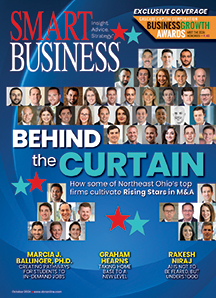
If you can’t read minds, the best way to find out what someone is thinking is to ask. But when it comes to marketing, so often we are talking — or in many cases, shouting — the messages we want our customers to hear, and we’re not pausing enough to listen.
As business owners, our challenge is hear these valuable opinions, make sense of them and react to them in a meaningful way to help grow our businesses.
To get the full picture, you need to know what your guests say about you and your competitors, both to your face and behind your back. If middle school taught us anything, it’s that those two versions can be drastically different.
You also need to understand how to use the information strategically to increase guest satisfaction, guide innovation, tighten operations and better your business overall.
Gathering customer insights
Some of the most common methodologies that are used to get inside the mind of your customer include the following.
Large-scale consumer research: No less than every other year, your company should invest in working with a third-party research company to gauge how your customers perceive your brand, competitors, products and service, etc. Large-scale research can help a company create long-term strategies and will let you know if you are on or off course against your company mission.
Focus groups: To answer questions like, “How does this piece of marketing make you feel? Do you prefer the taste of this product or this one?” Your best bet may be a focus group. This method is best to gain in-depth answers that oftentimes get at the emotional needs that drive decision-making. Focus groups allow two-way communication that can lead to brand-new insights.
Daily monitoring: Every day, your company should have a push-and-pull method of gathering customer feedback. A push method might be incentivized feedback like providing a link to an online survey with every receipt, and when you fill it out, you get a coupon. Or asking a specific question to your Facebook fans like, “If we had a mobile app, what would you want it to do?” The customer feedback section on your company website would fall under this category, as well.
A pull method might be monitoring chatter on Twitter, blogs, forums and business review sites like Yelp.com. This is great way to find out what your guests are saying behind your back. The informal nature of social media makes people feel comfortable to say what they really think. Social media monitoring can help companies spot trends, opportunities or issues as they develop. As an example, at Moe’s Southwest Grill we noticed our guests had a lot of questions about gluten and nutrition, so we made that information more accessible on our website and in our restaurants. Best of all, we spent zero dollars against gaining that insight.
Making sense of guest feedback
The most important part of conducting consumer research is using it. It sounds obvious, but it can be tempting to get a gigantic report full of insights and choose to move forward, business as usual.
Encourage your team to react to the research, and take the big risks that may be necessary to meet your consumers’ ever-changing needs.
For example, two years ago, research told us that organic, all-natural, healthy menu items were important to our guests. It would’ve been easier to not go after that demographic, but instead we spent the better part of 18 months tweaking recipes to meet the needs of our guests. The response has been overwhelmingly positive.
Your leadership team should consider insights from large-scale research, focus groups and daily monitoring to guide decision-making. Long-term strategy often comes from large-scale research, while focus groups really help steer marketing and R&D innovation. Daily monitoring is most commonly addressed through immediate response but should be tracked carefully for reoccurring themes or issues.
Bottom line, the key to understanding your customer is to listen. Just like any relationship, your relationship with your customers should involve two-way communication, honesty and trust, compassion, and, of course, fun. Use research to help keep relationships with your guests on track.
Paul Damico is president of Atlanta-based Moe’s Southwest Grill, a fast-casual restaurant franchise with more than 400 locations nationwide. He has been a leader in the food service industry for more than 20 years with companies such as SSP America, FoodBrand LLC and Host Marriott. He can be reached at [email protected].

